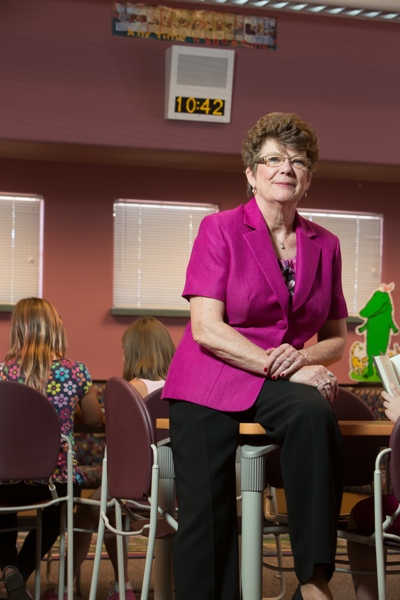After Newtown, Schools Enhance Security and Disaster Preparedness

John Decker
In late 2012, Rescue Union School District’s Sheila Simmons and her team were on the verge of deploying IP speakers and other emergency management technologies. “After the tragedy at Sandy Hook, we made this project our top priority,” she says.
Could it happen here? After 20 first-grade students and six staff members were murdered in the mass shooting at Sandy Hook Elementary School in Newtown, Conn., on Dec. 14, 2012, that's the question that parents, teachers and school district staff around the world asked.
Many districts responded by purchasing new technology and equipment to secure their schools. But Kenneth S. Trump, president of National School Safety and Security Services, a Cleveland consulting firm, cautions against such "knee-jerk reactions." Equipment installed quickly, without proper research and planning, only serves to create a false sense of security, he explains.
Although communications systems, access-control technologies and surveillance cameras can reduce safety risks, Trump maintains that it's crucial for school officials to first determine the specific threats they wish to address; how such technologies can help minimize those risks; how they'll use the equipment on a day-to-day basis; and how they'll purchase, maintain and upgrade it.
"Each school needs to be evaluated on a case-by-case basis to determine its specific needs, ranging from security equipment to policies, procedures, planning and training," he explains.
Using Tech to Get the Word Out
That's the approach California's Rescue Union School District took. It conducts regular lockdown, fire, earthquake and evacuation drills, followed by debriefings at its five elementary and two middle schools in Rescue and El Dorado Hills. Each school also reviews its safety plan at least once a year.
During an annual safety assessment in 2011, officials realized there were pockets around the district — on athletic fields and in older portable classrooms, for example — where they couldn't reach everyone. Ensuring that they could always contact students and staff quickly, effectively and silently in an emergency was a top priority, says Superintendent David Swart.
So for the next year, they reviewed the existing safety plan, worked with the sheriff's department, gathered feedback from parents, researched options and developed a new communications system.
"This is such a difficult problem that we're all facing," Swart says, referring to school safety. "It's going to have to be a community effort to protect the schools."
RUSD officials' priority was to ensure that all of its schools had a standardized, efficient, long-lasting paging system that could be used day to day and
in emergencies, explains Sheila Simmons, RUSD's director of media and technology. "We understand that every second counts when there is an emergency or a lockdown, and therefore we wanted to do it right the first time and not cut any corners," she says.
By late 2012, they finished their research and began to test the equipment they had settled on: the InformaCast emergency notification software solution from Singlewire Software; 410 Advanced Network Devices indoor IP speakers; and 80 outdoor IP speakers from Valcom. They had planned to begin purchasing and installing the equipment after the new year, but the shootings at Sandy Hook "fast-tracked" those deployments so they could provide students, staff and the community with peace of mind, says RUSD Technology Support Specialist Larry Garcia.
Simmons and her team spent winter break fine-tuning the numbers and testing the speakers, the InformaCast system and the district's IP phones to make sure they worked together before purchasing the equipment. "We were in a good place to start making some decisions right away," she adds. "We had done our homework."
The number of states that had introduced legislation calling for school building safety upgrades within four months of the Dec. 14, 2012, shootings at Sandy Hook Elementary School
SOURCE: Education Week (April 2013)
Before installing the equipment, they had to upgrade and subnet the network, replace old switches with HP ProCurve Power over Ethernet switches, put in additional switches and lay fresh cabling.
The speakers, which are located inside and outside the schools, have digital clock displays that can convert to scrolling text so classrooms and hallways remain silent in an emergency. Simmons says the IT team chose IP over analog speakers because they're easier to manage remotely and provide more granular control, among other benefits. The talkback speakers, for example, have microphones, allowing teachers to speak from any location in a classroom without having to pick up a handset.
The district also put in IP panic buttons that send a prerecorded message to designated numbers, such as the sheriff's department and district office. The alert routes through RUSD's InformaCast and phone systems as well, sending an emergency lockdown message to every speaker on campus. District staff would then use ParentLink, an educational community notification system, to call, email or text parents.
"You can never plan for all the 'What ifs?' but we want to make sure we can communicate with our staff quickly," Simmons explains.
"You have to be ready for anything."
A common mistake school officials make, Trump says, is addressing only the issues that would have prevented the most recent tragedy. After the Sandy Hook shootings, for example, everyone looked into access-control technology. But that's just one piece of the safety puzzle.
"You have to be ready for anything," confirms Klista Rader, director of information and implementation technology for Joplin Schools in Missouri. She learned that the hard way.
On May 22, 2011, Joplin High School's graduation ceremony came to a close at 5 p.m. Forty-one minutes later, a devastating tornado whipped across town, leveling nearly everything in its path.
The high school was one of five district buildings destroyed; another four — including the administrative offices, which housed the servers — sustained significant damage. The storm also disrupted electrical services in the area and flooded phone lines. Yet, within weeks, the district managed to get its systems working so it could communicate with stakeholders, and it eventually rebuilt those systems even stronger to protect against future disasters.
District officials' first priority in the storm's immediate aftermath was finding staff and students. They distributed notebook computers and lists of names to employees who were available to help the next day. Since phones were down, the main way they found people was through social media — looking for new posts and sending friend requests. Within five days, they had accounted for everyone. Seven students and one staff member were among the 161 fatalities in Joplin.
"You have to be careful as an educator about how you use Facebook," Rader says, "but we found so many people that way." Since then, many Joplin Schools teachers have created Facebook fan pages to communicate with parents.
"We learned about having data backed up — really backed up."
Klista Rader, Joplin Schools
Because the administrative building lost power, district officials set up a generator to run the email server. IT staff worked in shifts to make sure the electricity and servers kept running day and night. Eventually, the district transitioned from server- to web-based email.
They also began rebuilding the network and creating backups both across town and out of state. Although they didn't lose any data in the long run, they realized that any power failure could keep them from accessing data when they need it most. "We learned about having data backed up — really backed up," Rader explains.
Joplin Schools is applying other lessons from the tornado in its Operation Rising Eagle rebuilding efforts. For instance, the hallways in the old buildings became wind tunnels during the storm, hurling even vending machines across buildings. "Imagine if hundreds of students had been there," Rader says. "It makes me sick just to think about it." To prevent that scenario, the district is using bond money to create community safe rooms with key and automatic magnetic locks in all 17 schools.
But new safety features aren't limited to weather-related crises. Joplin Schools already had security cameras, controlled-entry systems and doors with standard locks. But after the storm, some teachers received panic button–equipped lanyard microphones that can project their voices around classrooms.
"There are a lot of things that you need to keep yourself safe," Rader stresses. "It could be the weather. It could be an intruder."







